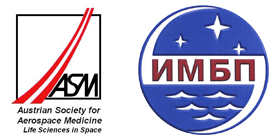The launch vehicle Proton transports manned orbital stations, interplanetary satellites and geostationary communication satellites into space. The rocket has, depending on its mission, three or four stages (the fourth stage is a transportation stage for space vehicles). Protons has in the earthnear orbit a payload capacity from over 70 tons.
All rocket stages are equipped with unicameral liquid-propellant engines, which are characterised through high power and small dimensions. They are powered with a combination of the following propellants: nitrogen tetraoxide as oxidation and dimethylhydrazine as fuel.
The first stage of the rocket posseses pivoting unicameral liquid-propellant engines with a thrust of overall 9 MN; the second stage has four engines with an overall thrust of 2.4 MN. The third stage posseses with a thrust of 0.6 MN as well as with a of four movable jets consisting controlled liquid engine with a thrust of 30 kN. The rocket (without payload) has an overall size of 44.3 m and a maximum width of 7.4 m.
The technical constructions and the launch complexes for the rocket Proton were erected at the rocket launch areas in the Soviet Baikonur. The mobile service-tower supplies the on the platform standing rocket. The service-tower is trailed and can be moved into a save dustance before launch. The filling of the rockets with ergols and pressure gas takes place fully automated.

